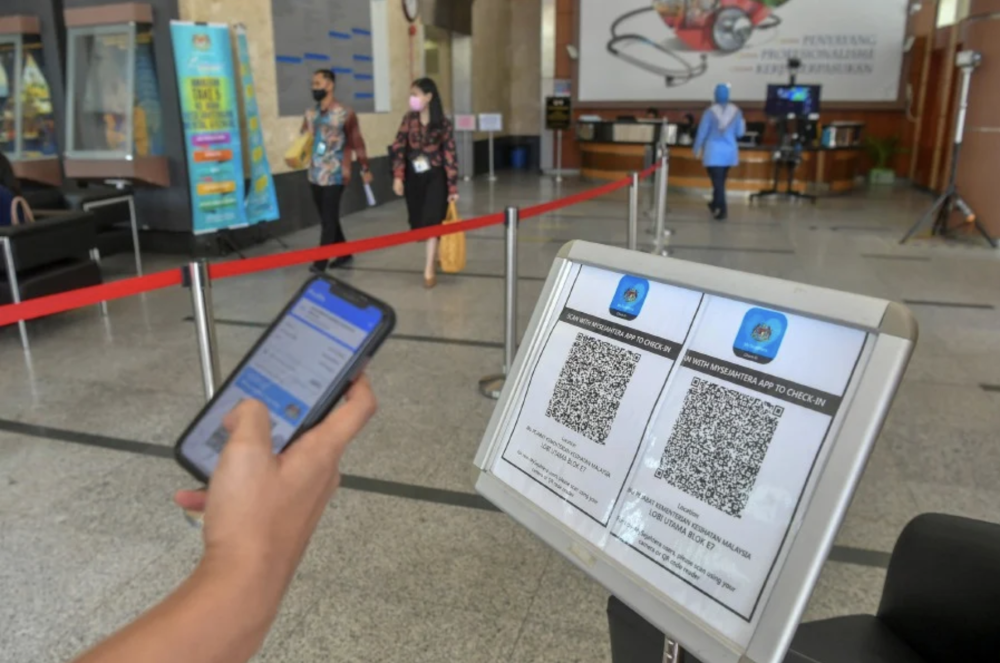
Published in Astro Awani, Asia News Today, New Straits Times, Bernama, and Business Today, image by Astro Awani.
Digital adoption has accelerated dramatically over the past two years mainly due to nationwide lockdowns to curb the spread of the Covid-19 virus.
For example, according to McKinsey, companies that adopted digitalisation in the business model has seen significant transformation in their growth prospects because they are adapting to the ever-evolving and rapidly developing socio-economic landscape.
In Malaysia, as of January 2022, there are approximately 29.55 million Internet users as per Datareportal (equivalent to around 89.6% of the total population). This represents a critical mass that has a huge potential in our quest to be a digitalised economy as articulated under the Malaysia Digital Economy Blueprint (MyDIGITAL) and the Shared Prosperity Vision (2030).
Our society is poised to see digital platforms becoming more mainstreamed and intertwined into people’s daily or regular lives.
This scenario was already envisioned under the concept of Society 5.0 as mooted and pushed forward by the then (and now former) Chairman of the Malaysian Digital Economy Corporation (MDEC) Datuk Wira Dr Haji Rais Hussin who is also the President and CEO of think-tank EMIR Research.
Hence, when discussing digitalisation, the scope encompasses all of government (public sector) and whole of society (private sector, non-governmental and non-for-profit entities, households).
Digitalisation means extending the application of the Fourth Industrial Revolution (4IR) such as the Internet-of-Things (IoT) devices, additive manufacturing (3-D design and printing), blockchain (distributed ledger technology), digital retrofitting (e.g., from precision tooling to advanced computer numerical control or CNC processes), robotics, 5G wireless technology for “network slicing” (a type of multiplexing), i.e., the creation of multiple sub-networks within the same infrastructural domain that is dedicated to a particular service and use such as edge computing, etc. based on enhanced mobile broadband (eMBB), massive machine type communications (mMTC), and ultra-reliable low latency communications (URLLC) features, etc.
Other digital domains are such as fintech (digitalisation of finance e.g., robotic process automation or RPA, e-wallets, and peer to peer/P2P lending), agritech (smart farming), edutech (digitalisation of education – teaching and learning), healthtech (digitalisation of health and social care – e.g., computer-aid reconstructive surgery), and nanotech (e.g., for hydrogen fuel cells to power electric vehicles), etc. alongside green and renewable technologies, and not least Big Data and the concomitant of artificial intelligence (AI) where it is being pioneered even in the justice system as regards the sentencing tariff and not just for traffic management and predictive analytics, among others.
Popular digital platforms and applications that have become part and parcel of our daily life includes social media (Twitter), knowledge exchange (Quora), media sharing (YouTube), and service-oriented (Grab – e.g., mobility as a service or MaaS).
Under the Digital Age, we have seen the rise of the “digital natives”.
Digital natives are the younger generation who grew up in the (what would be now considered as the preceding) Information Age and able to consume cyberspace or digital information and data as part of their daily life or routine lifestyle. Their habits and stimuli are profoundly shaped by digital platforms in a way that is unprecedented, historically speaking. Digital platforms have become “second nature” to the digital natives. As such, the term commonly refers to millennials (those born in 1980 and after).
Whilst not all youths and young adults aged 35 and below, for example, are equally proficient in terms of digital exposure and usage, the potential to leverage on the digital platforms to engage in capital-enhancing activities (e.g., personal development and growth, social expression) makes for a huge pool of market to be tapped whether for economic or political purposes.
Social media, especially, has provided a critical avenue for the youth to articulate, voice and express their views and sentiments.
Platforms such as Twitter and Facebook which has a user base of approximately 200 million provide an avenue for youths to find their collective voice in championing issues and spreading awareness on topics that are specific and particular to that demographic.
Now, youth movements in Malaysia have been taking advantage of social media to galvanise support as well as creating exposure for the wider public on issues that relate to the younger generation.
A prominent example is Undi18 – a youth-led movement that inspired change to the Constitution to lower the voting age to 18. Undi18’s strong social media presence gave them the leverage to connect with Malaysian youths to inspire the quest for youth-centric and democratic reforms.
The constitutional amendment should incentivise youths to be more politically conscious and savvy as they now have the power to vote for their and the nation’s future.
With the lowering of the age of voting, our youth can be kingmakers – as there is an estimated four million of now electorally enfranchised voters by automatic registration.
EMIR Research had previously published an article entitled, “Utilise civic tech to enhance citizen engagement in Malaysia” whereby the importance of deploying civic tech to empower citizens in engaging societal change was highlighted.
Civic tech should be adopted as the way that bridges the political and policy gap between the youth and the government – an outlet and mechanism that allows the youth to be an integral part of the policy and decision-making processes.
We can enhance the participation and involvement of the youth in policy-making by ensuring that the government extends its feedback mechanisms beyond, e.g., the annual budgetary submission cycles to all areas of policy formulation and implementation – across organisations (e.g., National Sports Council) and policies (e.g., agriculture).
We already have the fledgling Youth Parliament – which went “live” in 2020 as the world’s first Digital Parliament and powered by Microsoft – which included the rural and other indigenous (bumiputera) communities of Malaysia as embodying the full-orbed, multi-chrome character of the nation.
What needs to be done is to “co-opt” the youth as (unofficial/informal) “policy makers” – by empowering them to be part of the forefront of policy-making and analysis, including research and development (R&D) at the level of the administrative system with the wider public given space to air views and provide policy recommendations based on their experience (as part of the policy data) and concerns through digital platforms such as:
- the real-time dashboard of the Unit for the Implementation and Coordination of National Agencies on the Economic Stimulus Package (Laksana) by way of an inter-faced repository;
- the MyGovernment Portal (Government Online Services Gateway) under < https://www.malaysia.gov.my> – which functions as the “single gateway to all government online services” revolving around the life-cycle needs of citizens; and
- the Malaysian Open Data initiative <https://www.data.gov.my>.
Towards this end, a digital “coordinator” entity for youth participation in the public policy process (under the Prime Minister’s Department) should be set up to manage and coordinate the feedback and participation.
And the Public Sector ICT Strategic Plan (2016-2020) should be updated to strengthen and promote government-youth ties – that in turn feeds into the “whole of society” loop or processes on the back of digitalisation.
Notwithstanding, it needs to be pointed out (as it is already been elsewhere) that the nation’s digital native agenda (DNA) is still lagging behind as especially seen in the less developed states – since there is still a significant disconnect or divide which would entrench digital inequality and, by extension and inclusion, socio-economic disparity and political marginalisation.
As reminder, we saw how back in 2020, Veveonah Mosibin, a Universiti Malaysia Sabah (UMS) student had to climb a tree to get adequate Internet connection to sit for her online exams. This prompted an outcry from the public and opprobrium towards the systemic failure that led to her situation.
In what should be a shocking and deplorable statement, Sabah Assistant Science, Technology and Innovation Minister Datuk Seri Dr Ruddy Awah has stated that Sabah would still need to wait another 20 years to enjoy smooth Internet access. Given the pace of digital progression right now in mainstream Malaysia, to wait another 20 years is something that no politician and policy maker should unwittingly accept or resign to.
Digital marginalisation which particularly affects the youth would in turn have a negative impact on our economic transformation to digitalise rural-based activities from smart farming to green and renewable technologies such as solar farming – detrimental to our capacity to achieve self-sustainability in food and energy security amidst an increasingly uncertain and volatile world.
Digital platforms are a crucial medium to spur youth empowerment in Malaysia –politically and economically.
Equipping the younger generation with the skills and know-how required to navigate through the digital age is imperative in embracing digitisation and the digital economy in Malaysia.
Equally critical is that we ensure that no one from the digital native generation is left out.
Jason Loh Seong Wei and Rosihan Addin are part of the research team of EMIR Research, an independent think tank focused on strategic policy recommendations based on rigorous research.

